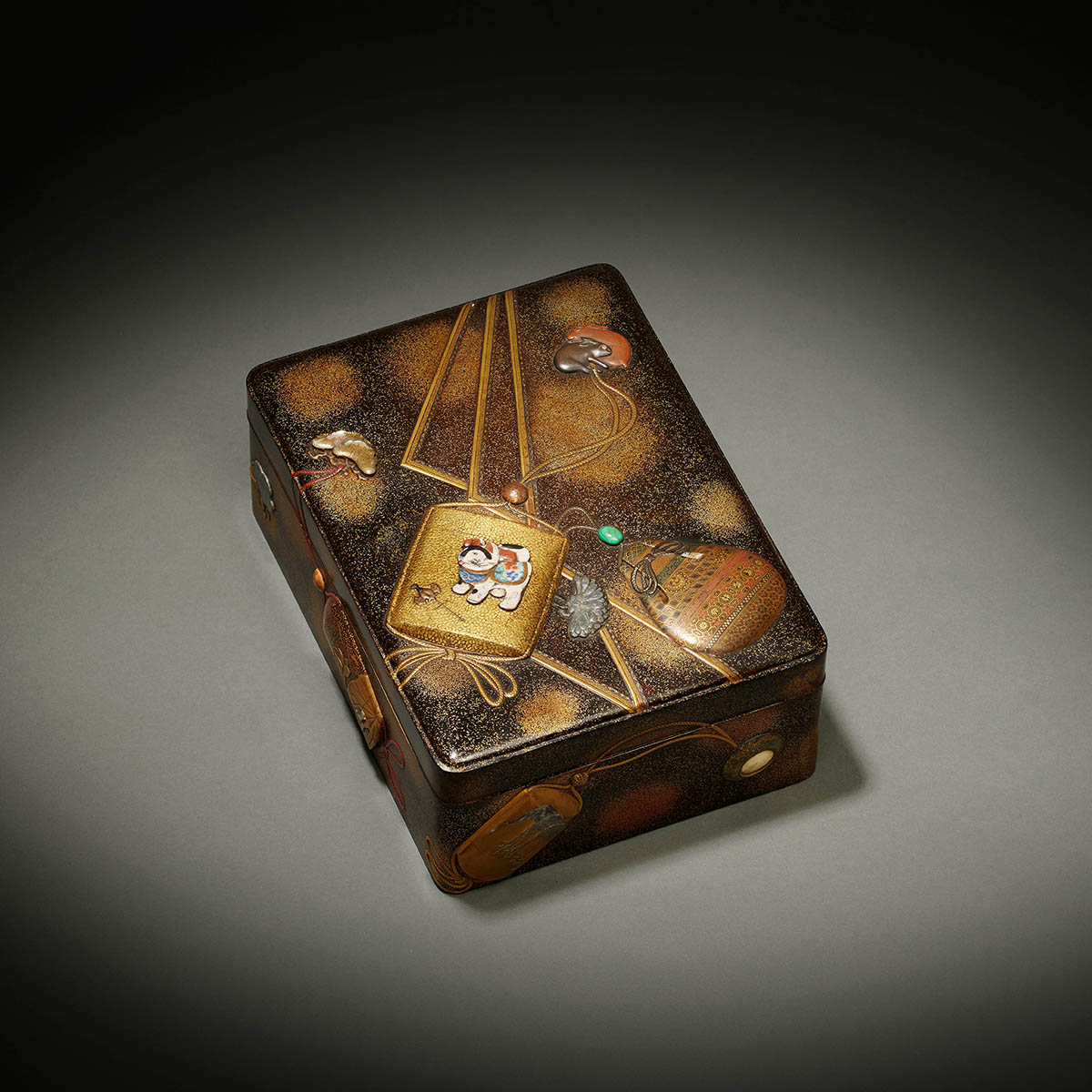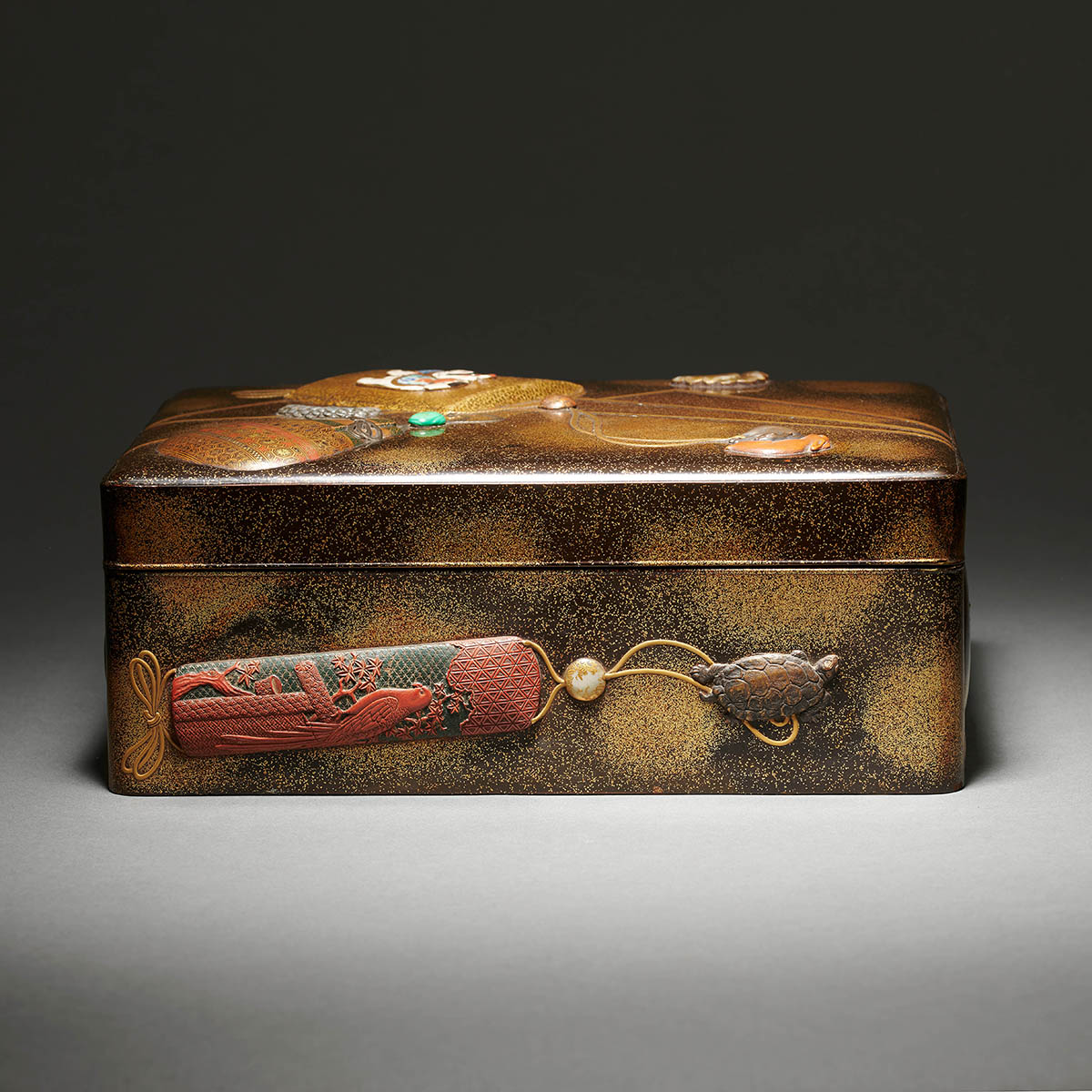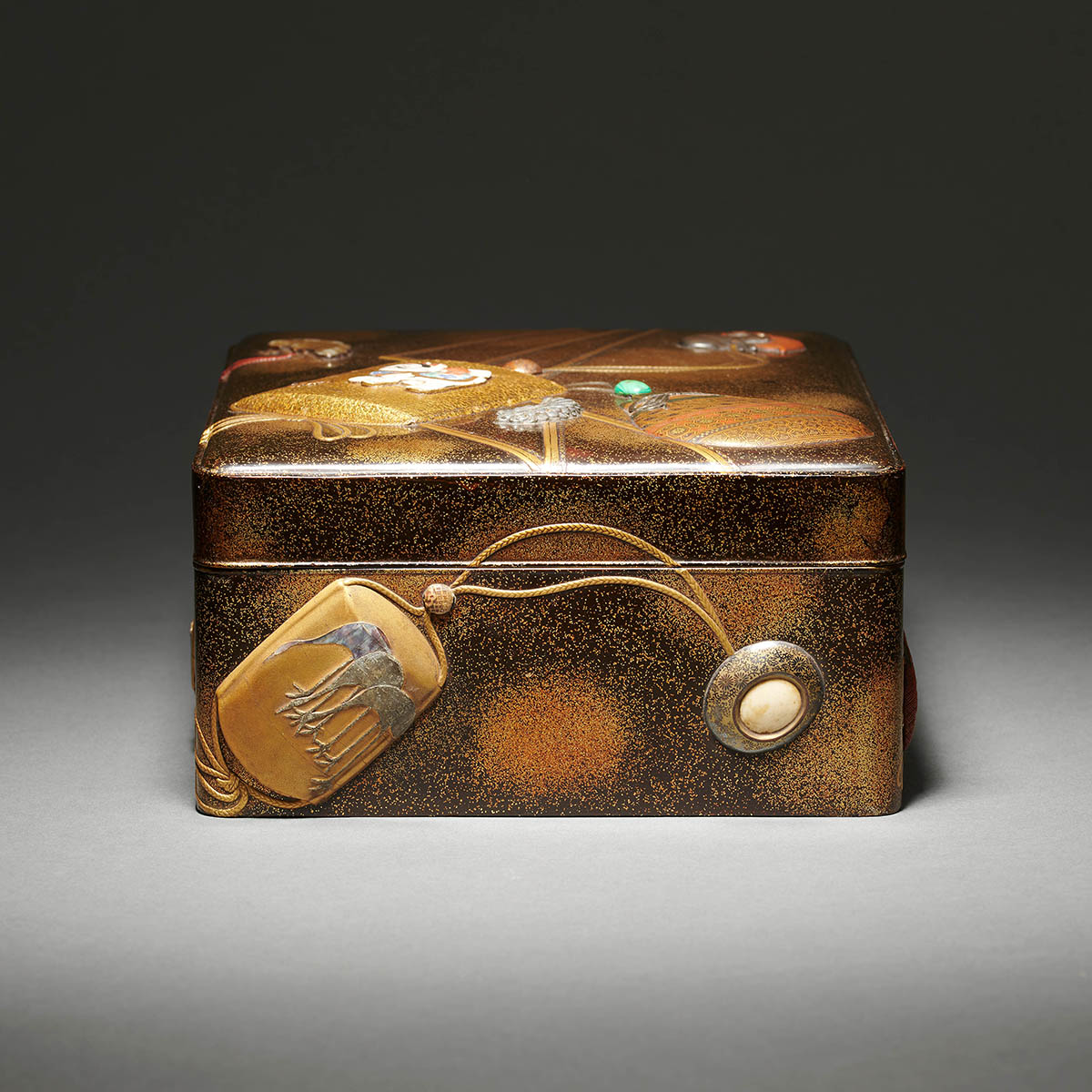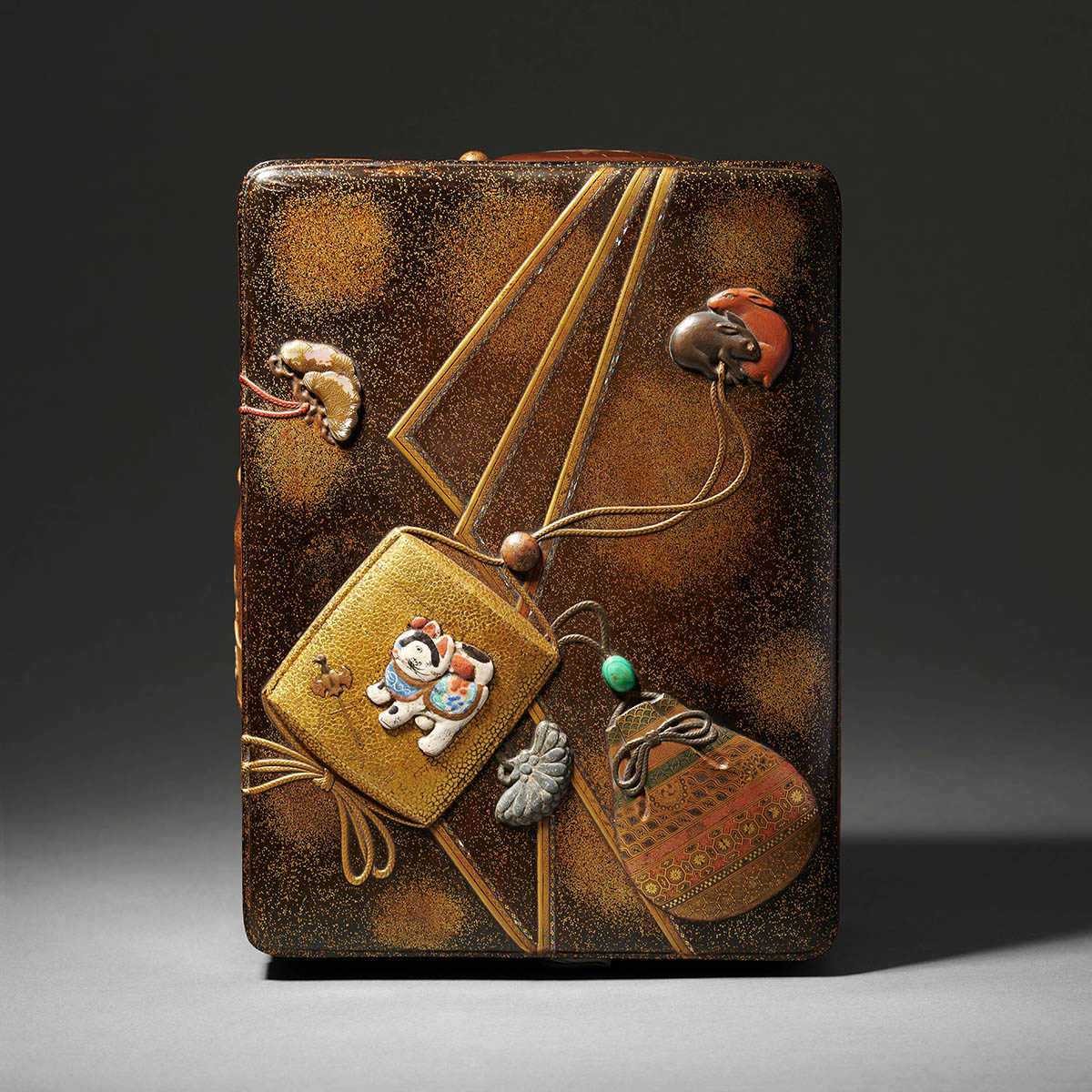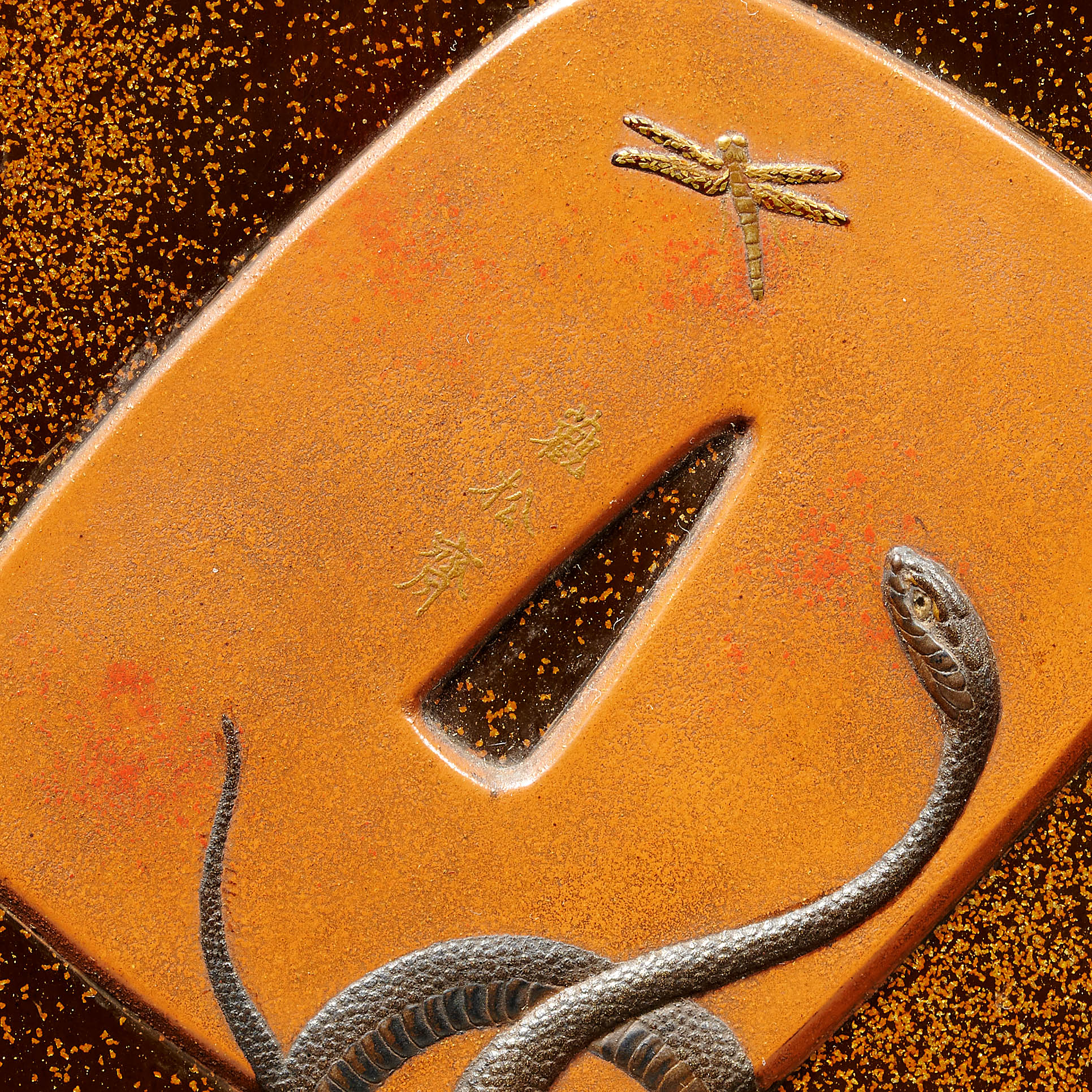Project Description
A Lacquer Tebako Decorated with Sagemono
Each side is decorated in high relief takamakie over a roiro-mura-nashiji ground with an inro. The scheme is as follows: 1. A Rimpa style fundame gold ground inro with standing cranes in pewter and shell attached to a lacquered manju with hiramakie kiku and karakusa around an inlaid bone centre. 2. A long slender tsuishu and tsuikoku inro with a parrot on a perch, lacquered shell ojime and a takamakie representation of a wood turtle as a netsuke. 3. Lenticular inro with a takamakie goose against silver lacquered full moon descending over gold togidashi trees 4. Netsuke of the preceding inro in the form of pewter and takamakie plum blossoms. Brown lacquer inro with a sparse nashiji ground, decorated with a small ceramic frog on gold takamakie lotus leaf with a flower alongside. The cover has the lacquered netsuke of the preceding inro, inlaid raden representing pine trees. In addition it has a hirame ground gold lacquer inro with ceramic toy dog and another toy, its takamakie netsuke of two hares, as well as a brocade pouch with repeat patterns in coloured togidashi, its ojime of malachite and simple kiku netsuke of pewter. Beneath the cover are a trompe l’œil tsuba with snake and dragonfly, as well as a kozuka with peacock
As at least 10 lacquerers used the Kanshōsai name, it is impossible to be certain which this might be, though the quality of the workmanship speaks for itself. When I worked at Sydney Moss we purchased a kurogaki box with similar decoration, also signed Kanshōsai. It was decorated with only 3 inro and a pouch, two of the former similar in conception to those with cranes and a goose on the present box. See S.L. Moss, One hundred years of beatitude, no. 31
Signed on the Tsuba beneath the cover. Circa 1850
26 x 20 x 10.6cm
MR4219
